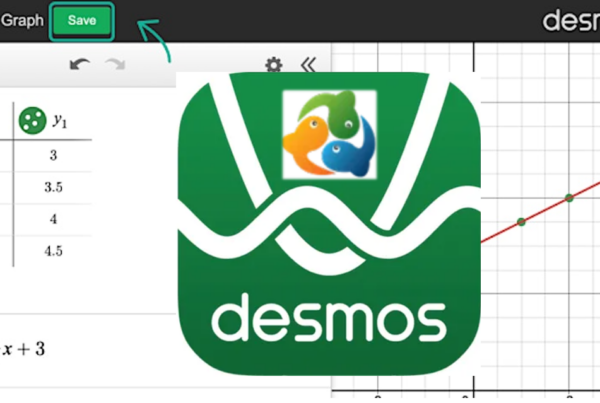If you haven’t already, please go read the Part 1 of this series!
My Take on the Digital SAT: POV from a Neurodivergent Tutor – Part 1 (add link)
In part 1, I discussed the Reading and Writing modules. Now, I’ll pick up with the math modules, and I’ll end with the strategies that worked for me – and might work for you!
Section 2: Math
The Desmos Calculator: an Invaluable Ally
The Desmos calculator is arguably my favorite thing about the digital SAT. Using the Desmos calculator (https://www.desmos.com/practice) wisely reduced my uncertainty in my answers to almost zero. Most of the algebra problems are easily solvable with the Desmos calculator, especially single variable equations and systems of questions. Additionally, it allows visualization of the equations and functions, which can be beneficial for many neurodivergent minds. Lastly, transferring problems to the calculator gave me a defined form of engagement (i.e. a goal: to graph the aspects of the problem), which helped me maintain my focus on the problem.
Straightforward Problems: Too Straightforward?
The College Board has announced that they are “no longer testing reading comprehension in the math section” – and they definitely are not. I’ve found that the word problems are much more straightforward. Overall, I spent a lot less time trying to figure out what the problems were requiring of me, which was great – until I got comfortable and stopped paying attention.
One thing that I’ve found is that difficulty and puzzles help me pay more attention – when things are simple, my attention drifts and I stop paying attention to details. This can lead to some simple mistakes on the test. So, while the more straightforward questions may be good for many, they may require some of us to develop strategies to maintain our attention to detail to avoid minor mistakes.
Strategies I Used (and Recommend)
Switch Up the Order
I am giving you permission to complete the questions out of order–you don’t have to go straight through! For both R/W and math, it might feel better to either complete all of the questions you find easy first, then double back and work on the harder sections. For others, it might work best to go complete the harder questions, and then end the module with easier questions. You can work with a tutor to discover what works best for you!
Don’t Annotate – Only Highlight
In the RW section, there is an annotation but at the top of the screen. You can highlight text in the passage, click “Annotate”, and then you will see the option to type notes as part of your annotation. I highly recommend using the annotation feature to highlight, but I caution against the note taking feature. I personally would get caught up in taking good notes instead of looking for the answer to the question–this feature could be distracting for some of us. So, highlight away, but beware of the notetaking rabbit hole!
Use the Desmos Calculator for Everything!! (Yes, Everything)
Okay, maybe not everything. But a lot of things! The Desmos calculator can be used to solve systems of equations, single equations, any problem involving graphing, many function related problems (polynomials, quadratics, linear equations). Practice some math problems and try to use Desmos for as many as you can–get creative! Some problems (probability, statistics, certain geometry, etc.) may not be well-suited for Desmos, but a lot of problems on the test are. A tutor can teach you cool new ways to use Desmos!
Mindfulness and Breaks: Mitigating Mental Fatigue
Despite the challenges, the digital format allowed for the exploration of strategies to enhance focus and cope with rapid transitions. Incorporating mindfulness techniques and short breaks between sections became instrumental in mitigating the mental fatigue that arose from constant topic shifts. These adjustments, while not foolproof, helped me find a rhythm that worked for my neurodivergent brain.
Conclusion
Overall, I really enjoyed the digital SAT – probably more than the paper SAT and the ACT. The new changes worked really well for my brain overall, with a bit of strategizing to help compensate for the aspects that didn’t feel great.
While the ACT has historically been the recommended test for most neurodivergent students, the digital SAT is also now a strong option. Though, while the digital SAT worked really well for me, other neurodivergent individuals may prefer the ACT. If you’re unsure which test to take, consider Mindfish’s practice test package, which allows you to take both tests and consult with professionals about which test best suits you.
Mindfish has been studying hard and is prepared to help you prepare for this new test, and our neurodivergent coaches are eager to help neurodiverse students adapt to this new test! If you have any questions about the digital SAT, neurodivergent test prep and strategies, or anything else related to neurodivergence and education, please reach out to me or Hailey for more information!




